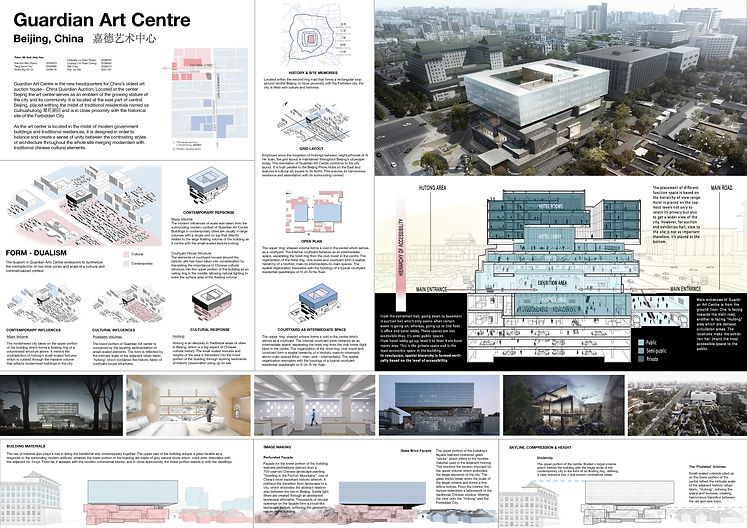Asian Architecture
Semester 5, Year 3
In Asian Architecture, we learn about the history of architecture in Asia and its evolution over time, from pre-historic to post modernism up until today. The first assignment requires students to produce an A1 research poster which we have to present our findings of our selected topic based on one of the four given themes: vernacular & traditional architecture; modernity in Asian architecture; contextual Architecture; and heritage and conservation.
The second project calls for a case study on contextual architecture within the context of Asia. Selected case study should portray responses to its context via form and massing, building materials, building height in relation to skyline, and spatial organisation in consideration to the historical and cultural development of the site.
Projects

Note: The format of the poster is incorrect. Research questions should appear as subheadings followed by findings that answer the questions.
The first assignment gave us the opportunity to acquire better understanding on vernacular and traditional architecture and innovative methods to conserve them. Initial research departed from searching traditional Chinese shophouses that were built in Malaysia in 1900s and understanding their history as well as usage. However, further studies have led us to discover the adaptive reuse of these old shophouses to run hipster cafes, boutique hotels and other artistes businesses, keeping these historic shop-dwellings functional and alive. Some combined businesses with different natures into a single building which, amazed us by how versatile a program-specific shophouse (literally shop and house) can be. In the end we decided to conduct case studies to understand how the typology of a traditional shophouse and its design features allow the adaptive reuse of it for programmes that cater for current trends and needs, thus venturing into the topic of heritage and conservation. Since Penang has the most successful examples, two case studies were selected to support the findings: China House Cafe and Sinkeh Guest House.

In a group of 7, we have selected Beijing Guardian Art Centre, a contextual yet modern building that is situated amidst a sensitive context containing historic buildings such as the The Palace of the Forbidden City and the traditional Chinese dwellings known as Hu Tongs; as well as commercial high-rise buildings.
Serving as an art gallery that houses exhibitions and auctions, the building is applauded for its contextual responses through the use of building materials, building form, scale in relation to the adjacent building heights and several design features that reference the local culture and traditional dwellings around it, such as the pixelated walls on the lower portion of the building forming an abstract of a famous local painting when observed from far, and the oversized glass brick facade on the upper part of the building with mullion system that resembles the traditional Hua Chuang (花窗). It is interesting to learn that glass, a modern building material, can be used to highlight the features of traditional architecture while giving a sense of humility that welcomes public into the place.

